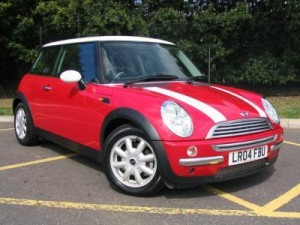- Visual Examination– The body should appear even, with no irregular spacing between the body joints. All doors and the trunk lid, should open and close with ease. Check for rust. Check the tires and also look for signs of brake fluid leaking on the inside of the tires. You may want to put the car on a lift to check for serious body damage, indicated by weld marks, spacers or a bent frame. Check for more than normal oil leaks, examine the muffler, tailpipe and exhaust pipe.
- Under The Hood – Check all hoses and examine the battery for leaks. Check the oil dip stick; if the oil is dark and dirty, the car may not have been properly maintained. Belts should be checked to make sure they are not worn and/or cracked. Also, if the car has an automatic transmission, check the transmission fluid to see if it’s dark colored or has a burned odor.
- Electrical System – Start the engine and check all accessories one at a time as follows: the gauges, instruments, radio, heater, air conditioner and windshield wipers. Blow the horn. Then, check the dome light, headlights, parking lights, turn signals and back-up lights. Also, check air-bags.
- Trunk – Open the trunk and check the spare tire. If it’s worn unevenly or is cupped, something may be wrong with the front end. Make sure the car has a jack, and that it is in good working order.
- Springs And Shocks – Push down on the corners of the car, front and back. If the car bounces up and down several times, the shock absorbers are worn. Stand back some distance from the car and see if it is level. If one corner is lower than another, one of the springs may be weak.
- Interior – Examine the upholstery, safety belts and carpeting; if the seats have covers, look under them. Badly worn carpeting or upholstery may be a sign of heavy usage. Turn on the ignition and check warning lights on the dash. Also check the brake pedal for free play.
- The Engine– With the dealer’s permission, race the engine a few quick bursts. Watch for excessive smoke out of the rear end, and if a loud tapping noise occurs, have it checked out by a qualified mechanic. A light tick or rapping in the top of the engine is not usually a serious problem, but a rapping noise could indicate a bad bearing. To check for a burnt valve or tune-up problem, put the brakes on and drop it into drive. If it idles roughly, there may be a problem. To check for abnormal engine wear, put the brakes on securely and pull the PVC valve. If there is no heavy smoke or a small amount uniformly coming out, it’s okay. If the smoke is heavy or puffing, it indicates excessive wear.
- Drive Shaft And Rear End – Take the car out on the road, examining the drive shaft and rear end. Drive the car at a speed of approximately 35 miles per hour. Listen for rear end whines. If the car bounces or shakes, it’s usually caused by tires out of balance. If the shaking is accompanied by an unpleasant droning sensation in your ears, it could indicate a drive shaft or universal joint problem.
- Steering System – Find a straight, level stretch of road or an expressway, and hold the steering wheel lightly. If the car consistently pulls to the left or right, you have a problem. When rounding a corner, the steering wheel should turn smoothly and have a tendency to return smoothly to its straight ahead position.
- The Brakes – For the final step, first make certain there are no other cars behind you. Then, while driving between 30 and 40 miles per hour, apply the brakes three or four times. If you get a consistent pull, either left or right, there is a problem. Finally, slow down to a speed of about 5 miles per hour and apply slight pressure on the brake pedal. If a humping or intermittent surge is felt, the drums or rotors could be out of round.
U.S. Wholesale Car Market Sees Continued Downturn Mid-June 2025
The U.S. wholesale vehicle market continues to soften through mid-June, reflecting broad-based declines across nearly all vehicle segments. Although some isolated categories showed minor signs


